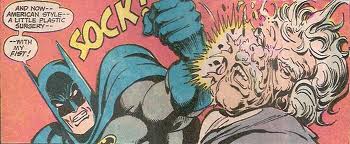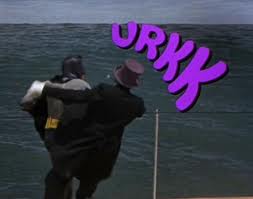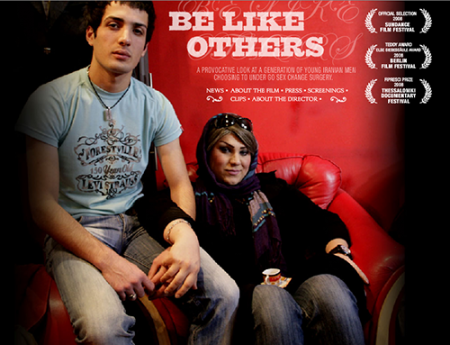Serendip is an independent site partnering with faculty at multiple colleges and universities around the world. Happy exploring!
Blogs

Through Batman's Mask: A Look At Differing Mediums
Before you read this paper, do me a favor. Sit down, relax, and try not to think too much. This paper asks the question, how do you think, and if you are thinking while you are reading about how to think… you can see how the question can become very complicated. Let’s avoid complication for the time being. I want your initial reaction, raw and instinctual. Then, we can debate and complicate the issue until our brains explode.
Now, look at the three pictures below, and for each, say out loud any words that come to your mind.




What's That Word For When You Have To Break It To Find It?
“Change. Change. Change. Change…change. Change. Chaaange. When you say words a lot they don’t mean anything. Or maybe they don’t mean anything anyway, and we just think they do.” -Delirium

" Fish live next to the bodies of dead pirates."- Kathy Acker
Since our discussion of Persepolis as a story of a young woman attempting to find her own identity among great destruction and trauma, and our subsequent discussions of feminism in relation to graphic narratives, I’ve been stuck on the idea that Neil Gaiman’s Sandman character Delirium might be a nice counterpart to Marjane Satrapi. Delirium, one of seven characters who are the embodiment of earthy concepts, is, like Satrapi, a child trying to find her way in the world. Also like Satrapi, she is the product of some great trauma, though this trauma is never quite defined. However, the resemblance ends there.

Be Like Others: An Issue Transcending Borders
Of the many riveting cultural situations that we have only begun to explore in class so far, one of the most striking were those of men and women born in the body of a sex that they do not identify with and how society responds to them as transgendered individuals. As I approach the question of feminism and how it differs geographically, I want to take a look into the transsexual community in America and compare it to that in Iran, specifically after having watched the film “Be Like Others”.
In the United States, transgender issues are rising to the forefront – in films such as “Boys Don’t Cry” and “Transamerica” and in news stories about transgendered children and the increase in support for these individuals and their families. Coming across the color photography project My Right Self was an experience that provided me with a more personal and moving account of what it is like to be transgendered and hopes to do the same for the public.
The website is an informative project while the photographs are intended to be a traveling show and part of advocacy to benefit the healthcare community, those who are transgendered and their loved ones. The website’s eager invitation to use photography as a vehicle to initiate conversation shows that part of America, even if a slim one; is becoming more accepting and actually attempting to understand this point of view on some level.

A Link Spam (3/1/12) Under Construction! Add yours anyway!
Links for your perusal that may or may not be relevant to class. Add your own! No seriously, add your own.
The H-Word was a series on Bitch Magazine's blog done by a former sex-worker on a variety of issues. I haven't read all of the articles, but I thought the ones I did read were really interesting and worth reading. I would suggest reading most of their series, actually, so go check it out.
Prism Comics is the comic book company mentioned in class.
-There was a very interesting exhibit at Drexel last fall (fall '11) called Half the Sky: Women in the New Art of China full of Chinese women artist's work. I remember reading interviews/articles quoting the artists themselves and how they interacted with/thought of feminism, but I can't remember where I left it at the moment.
Will be edited later. This computer doesn't have my zillions of bookmarks. Also, why don't we have more conversations here? I understand I'm a broken record, but really I just like talking about things with people and this is a convenient (sort of?) way to do it. I know we have more thoughts in class than what we say.

My Gender Workbook: Gender Quiz
Anne brought in Kate Bornstein's My Gender Workbook, and there is an awesome quiz in there that is adapted HERE if you're interested, to see your Gender Aptitude.
Leave the Walls Standing
Gertrude Stein and Gayatri Spivak are two very different women; Spivak was born in India yet completed most of her studies in the United States, and Stein was born in the United States but lived most of her life in France. However, they are both considered to be feminist authors, and they share the opinion that we cannot make ourselves too easy to understand for fear of letting ourselves be used for didactic purposes. The two accomplish this in different ways, Spivak by emphasizing the depth of our lack of understanding of those different from us, and Stein by limiting our understanding to the surface. While both of these approaches are feminist, Spivak’s approach ultimately gives greater agency to women who have been marginalized.
Emerging Genres Part 2
I must admit that yesterday’s discussion regarding science fiction left me somewhat puzzled because I know very little about science fiction. I would not mind reading something in this genre, I could understand it better if read something and draw conclusions or come up with definitions of what science-fiction is on my own. As mentioned previously, some of our discussions could be based on audiobooks; some people can understand texts better when they simply listen to them versus just reading them.
I have never read any of the selections mentioned in class but after some research I suggest the following:
1-"The Immortal Life of Henrietta Lacks"
2-Octavia Butler’s “Kindred”
Going from one genre to another would work best if we discuss one text per week so that we can post our thoughts over the weekend, the discussion can always continue online if some additional thoughts come up throughout the week. We can always take a few minutes every couple of days to see if there have been additions to our previous discussion.


